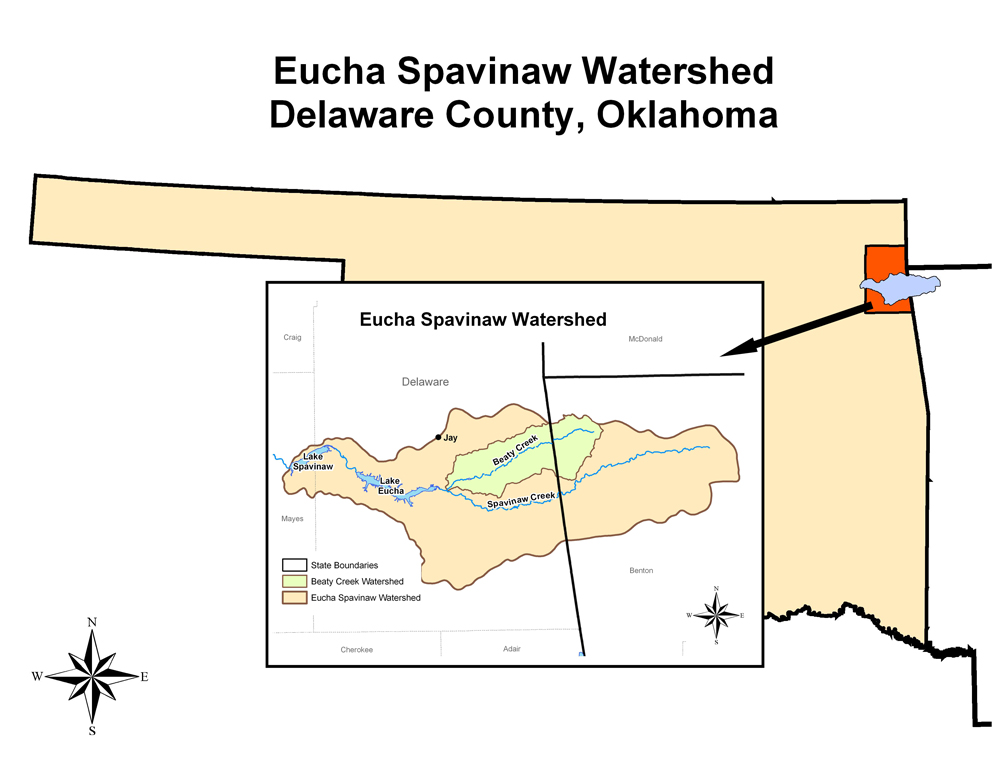EPA Offers Oklahoma Watershed Based Plan as Model
One of four states’ plans selected as best in nation

The U.S. Environmental Protection has offered Watershed Based Plans from Oklahoma, Kansas, Virginia and Maryland as models for other states to learn from. EPA stated that these are the best of 49 plans the agency reviewed during 2008-2010. Watershed-based plans are developed to support implementation efforts leading to the attainment of water quality standards in currently impaired water bodies within a specific watershed. EPA’s Office of Wetlands, Oceans and Watersheds sent the “Watershed Based Plan Review, Final Report, July 2011” to watershed groups across the nation as a guide with examples to help produce better plans.
The watershed-based plan for the Lake Eucha/Spavinaw watershed, developed and submitted by the Oklahoma Conservation Commission, was one of four selected by EPA as the best of the plans reviewed.
“We are proud that the Oklahoma Conservation Commission’s Water Quality division staff are once again being recognized nationally for the high quality of their work,” said Mike Thralls, OCC executive director. “Last April Oklahoma was recognized as a national leader in documented water quality success stories. High-quality planning combined with excellence in implementation and monitoring, and working with landowners, through conservation districts and the USDA Natural Resources Conservation Service, in a voluntary and cooperative manner, are the keys to Oklahoma continuing to be a national leader in natural resource conservation,” Thralls added.
EPA reviewed the 49 plans to determine the level of progress that states and other stakeholders have made in addressing essential components of watershed-based plans. The three major purposes of the review as stated by EPA were to:
- “Improve our understanding of states’ ongoing efforts to develop watershed based plans and identifying needs for improvement.
- “ Identify effective and innovative approaches to watershed planning and management that can be shared with states, tribes, and local partners.
- “Help guide future activities to promote improved watershed planning and management.”
EPA developed scoring criteria based on the nine essential components of a watershed-based plan, with several critical elements for each criterion. In most cases, EPA stated, states have done well with identifying causes and sources of pollution, management measures needed, developing outreach components for the public and designing monitoring programs to measure change. Where most states struggle is with estimating load reductions expected for the management measures selected, and setting criteria that can be used to determine whether loading reductions are being achieved over time and if substantial progress is being made towards attaining water quality standards.
The Oklahoma Lake Eucha/Spavinaw plan addressed each of the nine components with adequate specifics for each, the report states. In particular, “the plan contains clear quantitative goals complete with an explanation for choosing those goals and how the goals correspond to the load reduction goals and interim water quality criteria.” And “all of the information in the plan was tied back to the goals of the plan, so there was very little extraneous information which made the plan very easy to read and comprehend,” the report states.
“Overall, the Lake Spavinaw/Eucha plan was one of the best-reviewed, and should be shared as another example of an excellent watershed based plan,” the report from EPA states.
